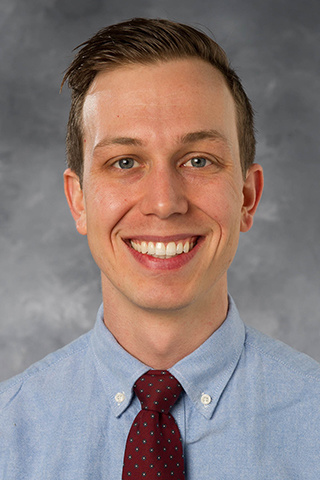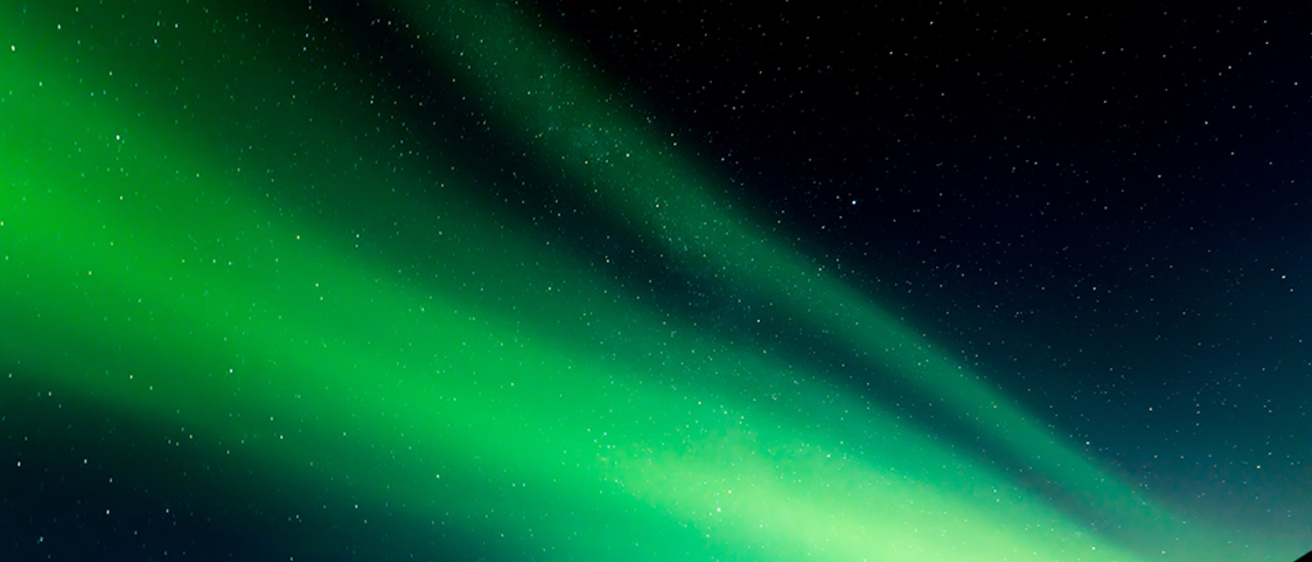Jim Schroeder was an 11-year-old Boy Scout on a camping trip in Wisconsin when he first saw the northern lights.
“I knew what they were, but I had never seen them,” Schroeder says. “I definitely couldn’t articulate it then, but it was a moment of awe that made me realize the universe is much bigger and much more beautiful than I had imagined.”

What intrigued Schroeder as a boy has become one of his main academic pursuits as a graduate student in physics and astronomy at the University of Iowa. Schroeder is using a $126,000 fellowship from the National Science Foundation to study the underlying physical principles that produce the northern lights
Schroeder is working with UI physics and astronomy professors Fred Skiff, Craig Kletzing, and Greg Howes on a series of experiments at the Large Plasma Device facility at the University of California–Los Angeles (UCLA) to study how electrons are accelerated in the process that produces the northern lights. Schroeder has built a series of antennae and diagnostic devices that aim to recreate this acceleration in the laboratory.
The northern lights appear when electrons originating from the sun collide with gases in the earth’s atmosphere. The lights’ various colors come from collisions between different types of particles; the most common, vivid green, is produced when accelerated electrons collide with oxygen atoms, and the rarer midnight-blue/purple hues are produced when these electrons collide with nitrogen atoms.
Although scientists understand how the color-producing collisions occur, they do not know precisely how the electrons themselves are accelerated into our atmosphere. The majority bounce along Earth’s magnetic field lines, which keeps them out of the atmosphere, but a disturbance in the field can cause the electrons to be pushed deeper into the atmosphere.
Physicists believe disturbances in the magnetic field happen when the solar wind blows past the Earth, which can, in turn create Alfvén waves. These waves, named after a Swedish scientist and Nobel Prize winner, also travel along the Earth's magnetic field lines. When Alfvén waves hit electrons at just the right speed and position, researchers believe, they can accelerate the particles toward the Earth’s atmosphere, where their collisions with atoms like oxygen and nitrogen produce the northern lights.
Schroeder, who studied double bass as an undergraduate, puts it this way: The solar wind plucks the magnetic field line, and the resulting Alfvén wave ripples down the field line like a vibration down a string.
Inconveniently, there is no solar wind in the laboratory, so Schroeder creates Alfvén waves using a series of antenna paddles.
“You can’t just buy an Alfvén wave antenna, so I had to build them from scratch,” says Schroeder, who is in his fifth year of graduate study.
He starts by selecting the right material and designing the shape of the antenna paddle, guided by Skiff, Kletzing, and advisers at UCLA. Then the construction phase begins: cutting and soldering the metal to create the antenna paddle.
Schroeder has spent the last eight months constructing four different prototypes, trying to find the right recipe for success. He attaches the paddles to the end of an antenna wire; they’re designed to disturb the magnetic field by introducing an electric current. This disturbance creates the Alfvén wave. Schroeder uses multiple antenna paddles placed next to one another to produce a clear current pattern, which in turn helps create a cleaner Alfvén wave.
Having found a design he was satisfied with, Schroeder made all new antenna paddles to take to California.
“For this experiment, we will put six antenna paddles in the Large Plasma Device to create an Alfvén wave. For the upcoming run, I made 10 new paddles concurrently, which took about a month,” he says.
Schroeder’s skill as both an experiment designer and machinist is something that sets him apart, says Skiff, who is the department chair and who has also been Schroeder’s adviser for the past five years.
“He has done a multitude of tasks: building things, doing theory, refining experimental design. He works to expand his horizons and be well-rounded.”
The researchers aim to see how well the antennae can launch Alfvén waves and to find out if they can observe electron acceleration using the diagnostic device Schroeder built. The electrons will be traveling up to 7.5 million mph, and the acceleration the researchers are after occurs within one millisecond.
“Fortunately,” says Schroeder, “we can repeat the process over and over to get a clearer picture of what’s happening within that millisecond.”
Schroeder anticipates that the trip will be both exhausting and rewarding. “During our time at UCLA, it’s crazy. I spend all day running experiments and then go over the results all evening trying to make sure the data makes sense and that we’re making the most of our time there,” he says.
After returning to the UI, Schroeder plans to share preliminary results from his experiment during a talk at 1:30 p.m. May 2 in Room 309, Van Allen Hall.
Although Schroeder is nearing the end of his doctoral journey, he wants to see his project through to the end. “I am really invested in this,” he says. “I want to see electrons accelerated by an Alfvén wave, and I won’t be satisfied until we can do that.
